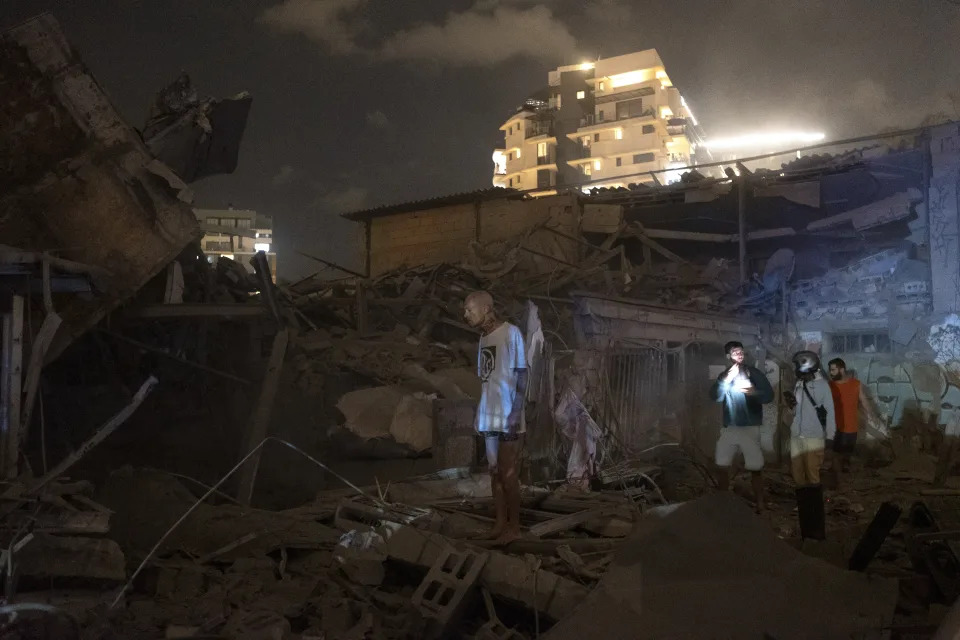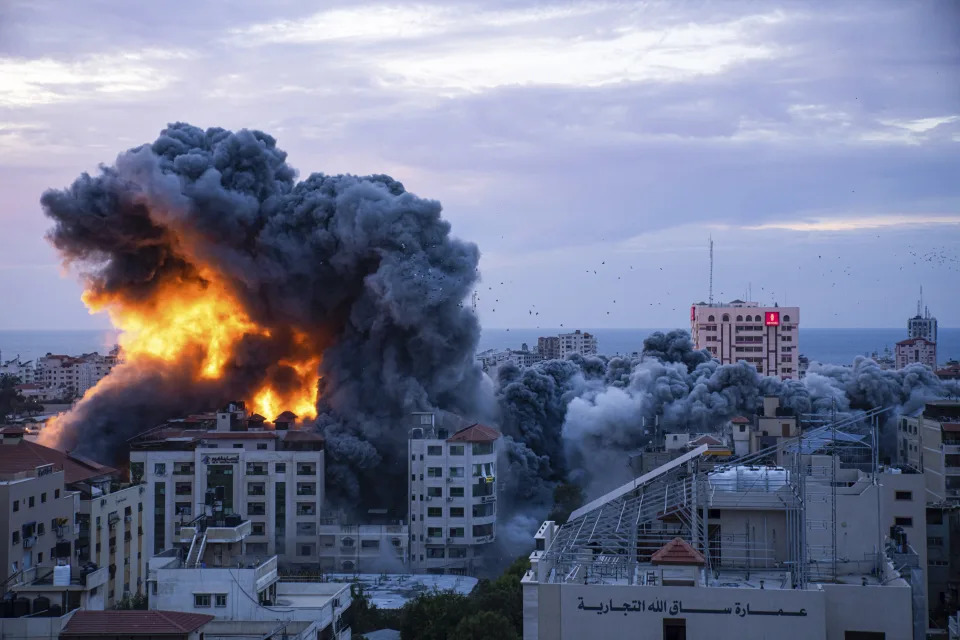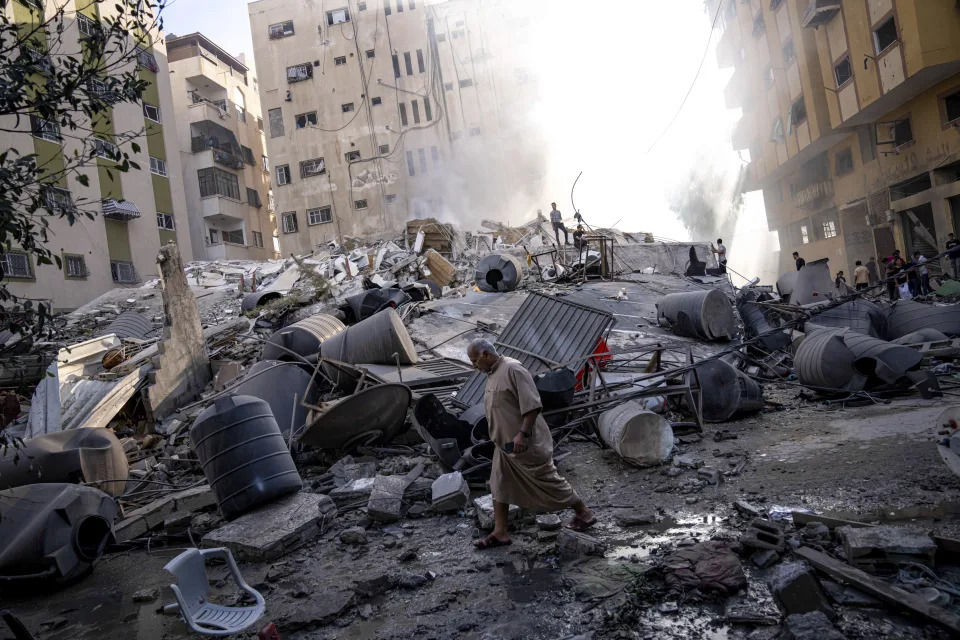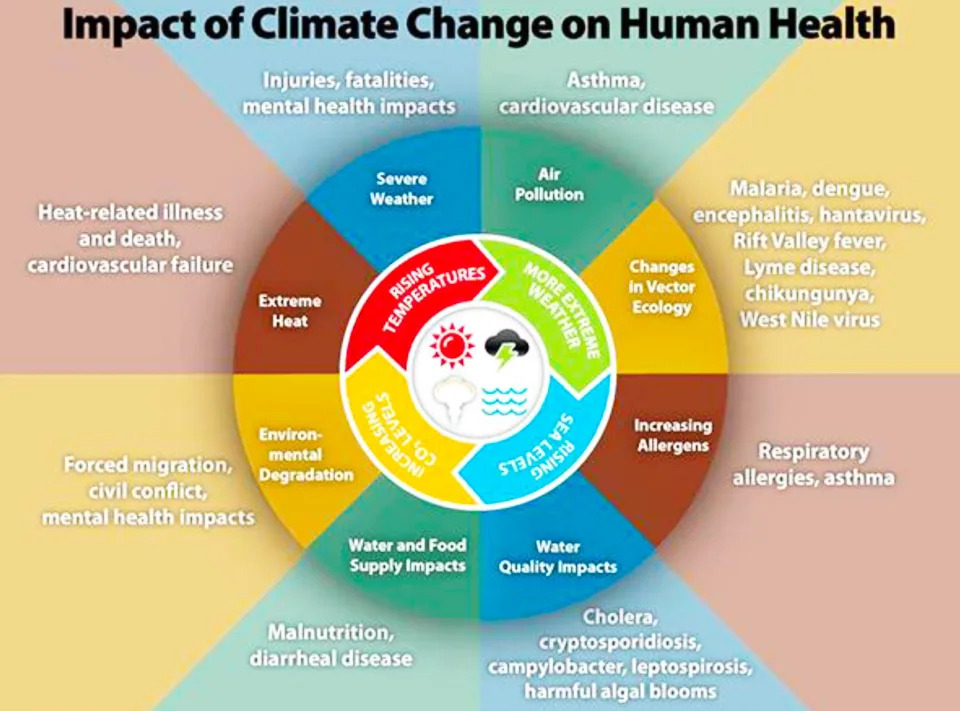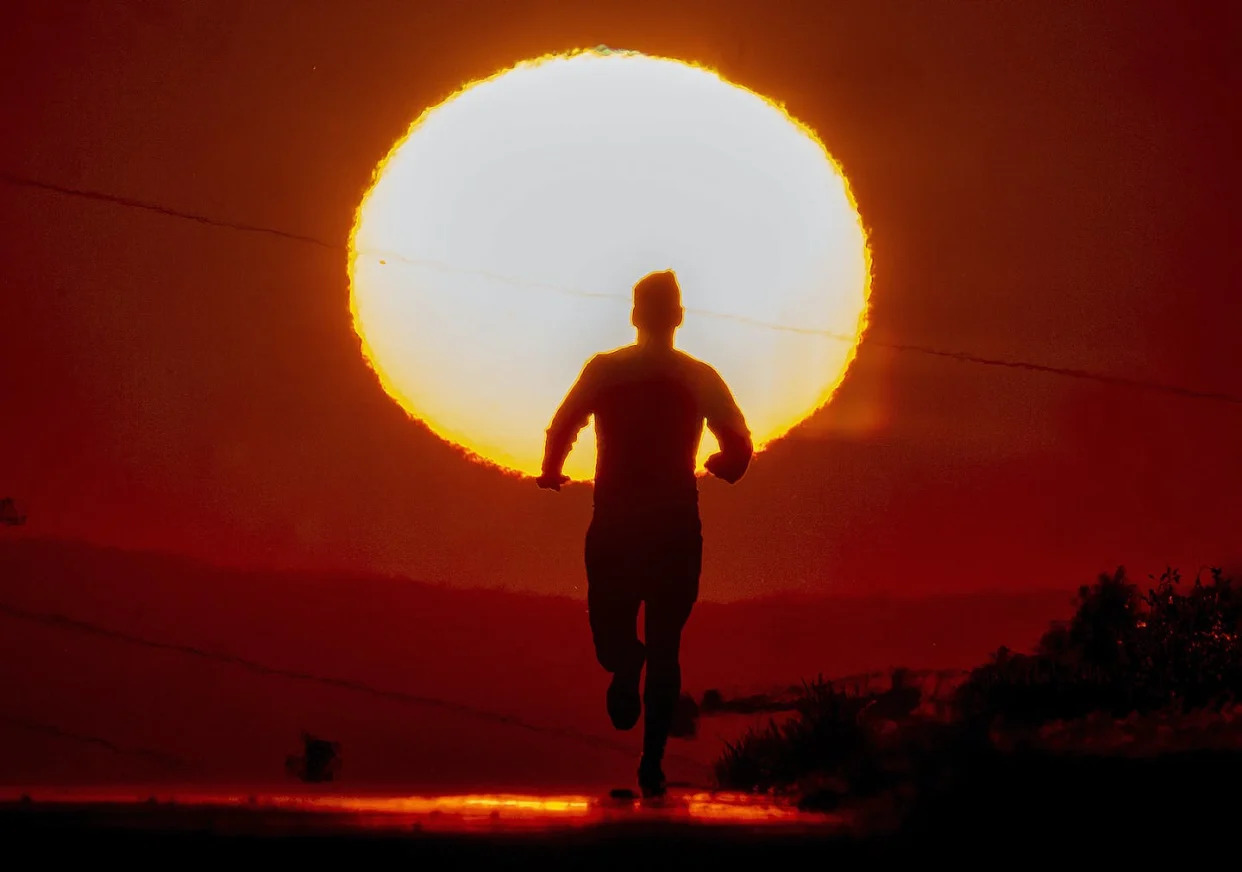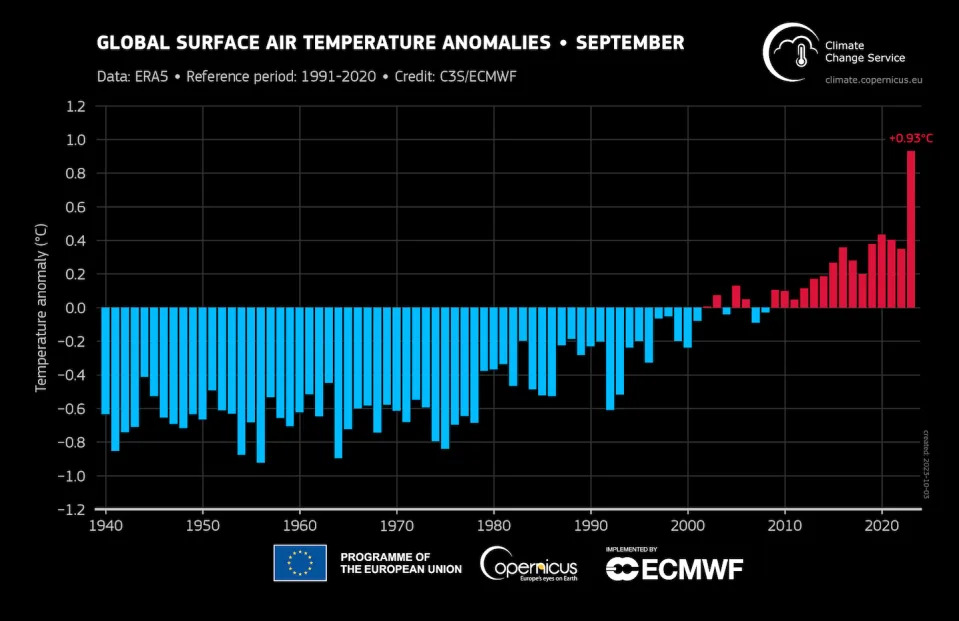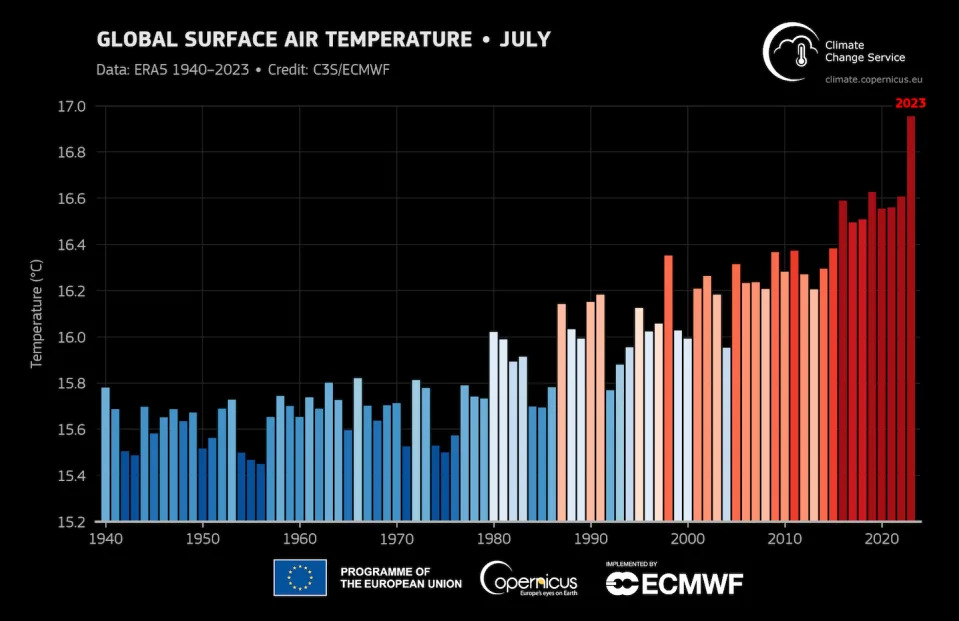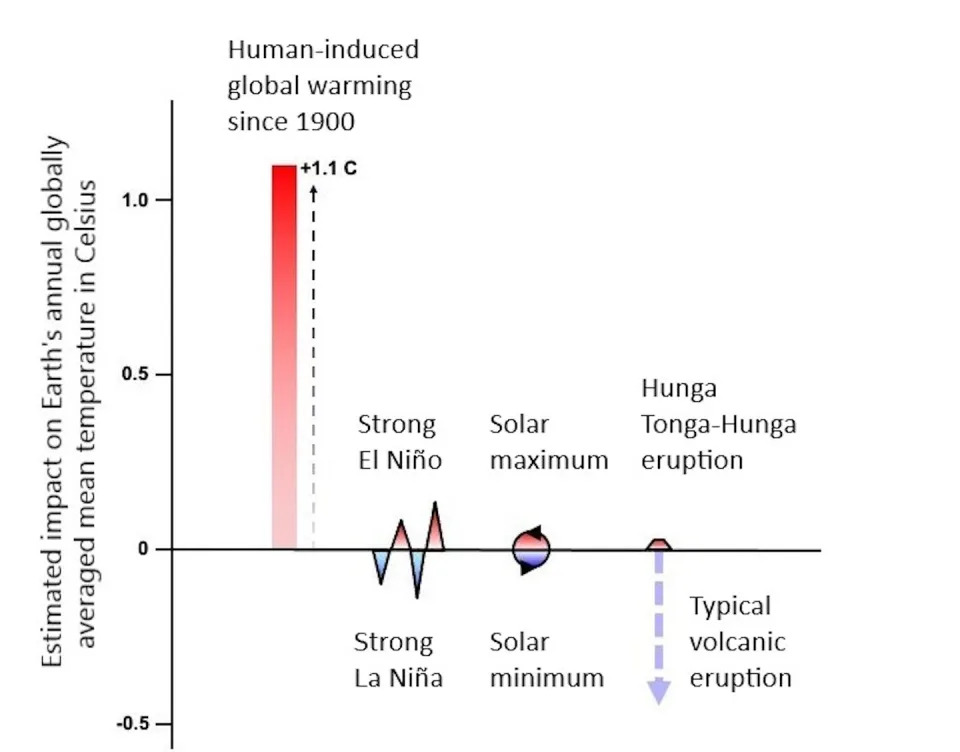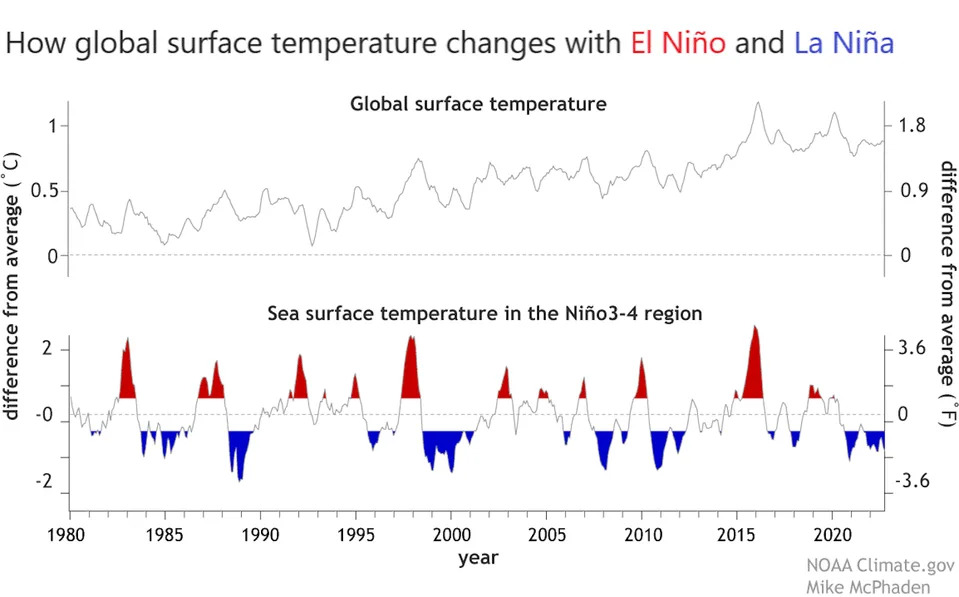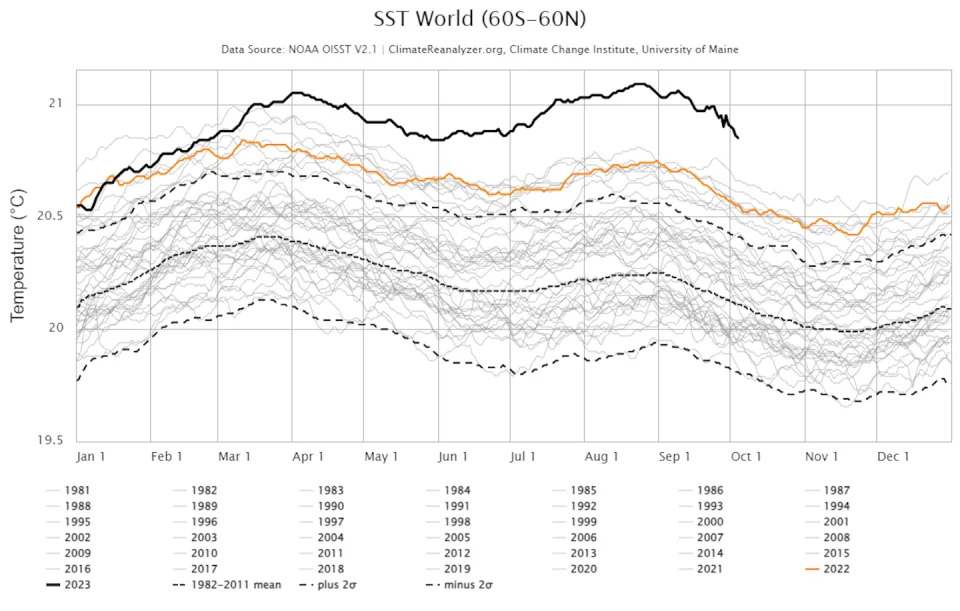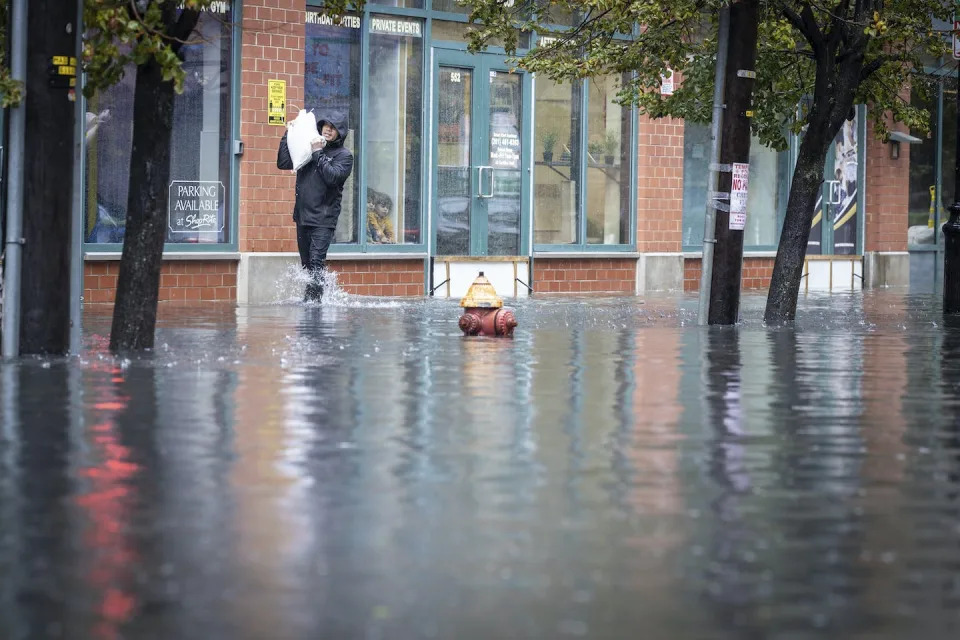The New Republic
What Ukrainian Soldiers Really Think of Trump and the GOP
Ben Makuch – October 9, 2033
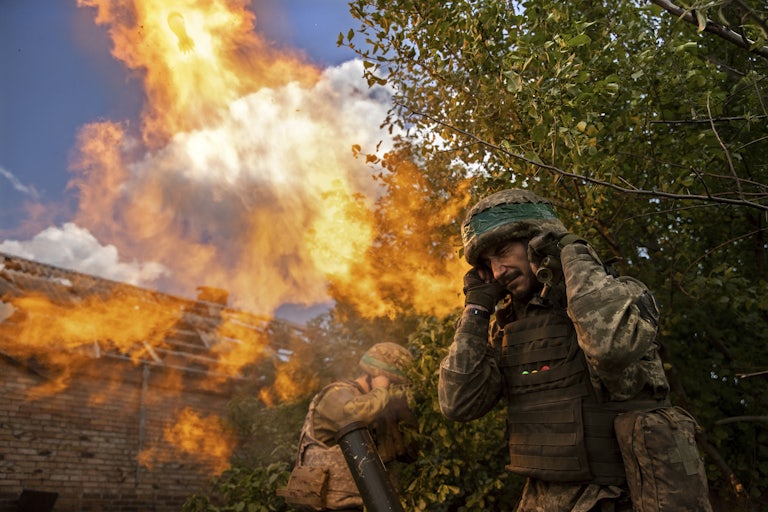 Two Ukrainian soldiers fire a mortar in Bakhmut, where some of the fiercest fighting of the war has taken place. TYLER HICKS/THE NEW YORK TIMES/REDUX
Two Ukrainian soldiers fire a mortar in Bakhmut, where some of the fiercest fighting of the war has taken place. TYLER HICKS/THE NEW YORK TIMES/REDUX
For starters: “Donald Trump is a fucking asshole.”
“Donald Trump is a fucking asshole,” said Anatolii, a soldier in the Ukrainian Territorial Defense Forces. The leaves are changing, and it’s a chilly fall day in Bilopillya, a village in the Sumy region where you can see Russia a few kilometers away. “That’s what I think of him.”
His brigade defends flat farmland that wouldn’t be out of place in a Tolstoy novel—except the endless, rolling scene, laced with crops and thickets of trees, is heavily mined and pockmarked with artillery blasts.
The question of who will become U.S. president in 2024 is far from his mind. Anatolii is one of a few soldiers in his brigade, made up of other locals, who defend the Ukrainian border with Russia. On any given day, he deals with barrages of artillery, Grad rockets, the pings of gunfire, and the occasional missile, one of which took out a local school in March.
“The problem is, they never give us enough weapons,” he told me in an almost exasperated tone about U.S. and NATO arms transfers. “If he comes back and what? Give us none again?” Many in the Ukrainian military and government already feel that they are not receiving enough military aid. The stakes of the nascent Republican primary, which has been defined by isolationist rhetoric, are potentially dire.
Back in Kyiv, sitting in a hipster bistro near the banks of the Dnipro River, I find it tough to remember that, less than 48 hours ago, a swarm of Iranian-designed Shahed drones were shot down overhead, the debris landing near baroque architecture and cobblestoned streets.
I’m in a casual conversation with a Ukrainian official in the upper brass of Kyiv’s military effort. The war, he and his colleagues believe, is far from over. The need for continued support from the West is vital.
“For now, it’s going to be the same, then up and down,” he said to me, referring to the kinetic energy of a conflict that has grinded to mostly a standstill as Ukraine’s counteroffensive crawls on in the east. “But in Donbas, there is always going to be crazy shelling and missiles all day long.”
Spilling in and out of the American news cycle, the war in Ukraine has settled into its moodier, teenage era: One moment you might be sipping coffee on a sunny, cloudless day in the picturesque capital city, safely sitting on a cushioned seat; the next, it could be raining missiles in the distance, with air sirens singing for you to get into a shelter.
The consensus among Ukrainians is that the duration of the fight is indefinite, with no peace deal in sight. Stateside, the question of what to do about a war that has settled into a stalemate has become one of the most divisive issues in the ongoing Republican primary. Trump, the front-runner, has long complained that the war is too expensive, and that he could simply end it if reelected; his copycats, Vivek Ramaswamy and Ron DeSantis, have largely followed his lead. The party’s establishment wing, all languishing in the single digits, has backed continued financial and tactical support for the war effort.
Whatever path the immediate future of the war takes, recent chatter from the GOP primary has U.S. and, especially, Ukrainian intelligence and military figures theorizing about what the future of the conflict might be should Republicans retake the presidency.
The main concern? The $44 billion worth of weaponry (and counting) that has been essential to Ukrainians’ ability to stall Russian advances and carry out some of their own.
There isn’t yet any level of overt panic about what the future holds. But there is a sense of vigilance and preparation for the worst-case scenario.
One American ex-Marine, a foreign volunteer who trains Ukrainian soldiers in combat, told me that the Ukrainian officers he schools in places like the Donetsk region are well aware of what a Republican president could mean for the war effort.
“Anyone on the front lines who reads English-language media and follows either U.S. elections or news around the funding is aware that Republicans potentially want to pull the plug,” he said, keeping his anonymity in order to protect against possible Russian reprisals. “They know that 2024 is potentially a big, big problem, and they have objectives to hit in the counteroffensive to make sure they’re comfortable in case Trump wins, then stops the weapons transfers.”
But, oppositely, the same Ukrainian official at the bistro shares the uncanny confidence in American resolve that his president, Volodymyr Zelenskiy, expressed to The Economist in September. Shrugging off a question about the possible consequences of Trump returning to power, Zelenskiy insisted that a President Trump would “never” take an action supporting Vladimir Putin: “That isn’t what strong Americans do.”
“I think Trump would keep giving us the weapons,” the Ukrainian official told me flatly, explaining that the consequences of withdrawing support would be so profound that they make it unlikely for any leader—even one as vociferously isolationist as Trump—to fully pull out.
“They have already given so much money and weapons for our war, if [the Republicans] take over and Ukraine turns into a disaster, they would be responsible for that, just like [President Joe Biden was] in Afghanistan,” he said, referencing America’s disastrous summer 2021 withdrawal, which started the current president’s slide in the polls.
So far, the Department of Defense has unleashed a torrent of weapons transfers to Ukraine that have proved essential in the fight against a Kremlin war machine that is vastly better armed and manned. Everything from Javelin anti-tank missile systems, to the infamous Stingers used by the mujahedin during the Afghan-Soviet war, to F-16 fighter jets and M1 Abrams tanks has been promised in increasingly bolder Pentagon and allied packages.
It isn’t just national Republicans who have begun to question the scale of support for the war—skepticism is growing in other NATO countries as well.
“Everywhere some politicians are using Ukraine to make support for their cause,” said one senior Ukrainian officer with knowledge of war planning. “The American people must know it is much cheaper for us to fight than for you to fight.”
To him, the conflict is already a quagmire for Russia on par with that of the Afghan-Soviet war. But ending aid could quickly reverse that. The same soldier, almost doubting himself, was frank and saw the pitfalls of a Republican win.
“Of course, our fighting costs a lot of money, and we know there are no security guarantees if Trump wins.”
It is possible, however, that opinion on Ukraine will shift as the Republican primary progresses and the candidates continue to appear at monthly debates—especially since Trump, the most prominent voice against U.S. support for Ukraine, has thus far declined to participate. Still, Trump’s prominence and level of support could draw even more Republicans to question the war.
A growing number of Republican voters oppose further aid to Ukraine, and there’s good reason to believe that figure will rise as the primary process and the accompanying debates drag on.
Perhaps the most extremist take on Ukraine in the primary comes from the oft-arrogant Ramaswamy, who has made the outlandish demand not only for the dismantling of the FBI, but also for granting Russia Ukrainian territory. The pharma-businessman has gone so far as to label the Biden administration’s current posture “disastrous” and has declared that military resources for Ukraine should be redirected “to prevent the invasion of our own southern border” with Mexico.
But a Republican president might not be catastrophic for the Ukrainian war effort. Lucas Webber, cofounder of the Militant Wire research network, concurred. “It is unlikely, even if Trump truly means what he says, that he would be able to shift America’s Ukraine policy in any meaningful way,” Webber told The New Republic over email. “The U.S. political elite and security establishment consensus on Ukraine will leave Trump very little room to maneuver, as seen during his first term. Moreover, it is also highly improbable that either Ukraine or Russia would accept anything remotely resembling the territorial status quo on the battlefield.”
There have been efforts to push back, however. Former Vice President Mike Pence has made support for Ukraine a major campaign issue that he’s used to hammer his rivals, particularly DeSantis, whom he has attacked for minimizing the conflict.
“I know that some in this debate have called the war in Ukraine a ‘territorial dispute,’” said Pence, directly quoting comments the Florida governor made in March 2023.
“It’s not; it was a Russian invasion, an unprovoked Russian invasion. And I believe the United States of America needs to continue to provide the courageous soldiers in Ukraine with the resources they need to repel that Russian invasion and restore their territorial integrity.”
Even if the Republicans commit to a total withdrawal of aid to Ukraine, it is possible that contingencies will be put in place should Biden know his presidency will be coming to an end. If Biden loses in 2024, weapons could be sent over right before the Republicans take the White House.
Whatever position on the war the eventual Republican presidential candidate takes, there is no denying one simple fact: If Ukraine loses to the despotic Putin regime, it not only would bolster autocrats around the world (or perhaps even herald the renormalization of imperial conquest) but also would undoubtedly weaken the West.
But if Biden can hold out, perhaps all the fears surrounding an end to the arms flow to Ukraine will be for naught. NATO and the EU want to continue thinking of themselves as global leaders, both militarily and economically. The loss of Ukraine after so much was spent to save it would be the crack in their castle that countries like China and its allies will see as a further sign of the decline of the West.
“Trump is not coming back,” Anatolii said to me at the end of a long week manning checkpoints. “I don’t think so.”
For the fate of Ukraine, he’d better hope he’s right.
Ben Makuch is a national security reporter and former correspondent for VICE News Tonight. His reporting has taken him to the Middle East, Pakistan, Russia, and Ukraine, where he has covered the war since 2016. He hosted the 2022 podcast American Terror, about far-right extremism in the United States.




